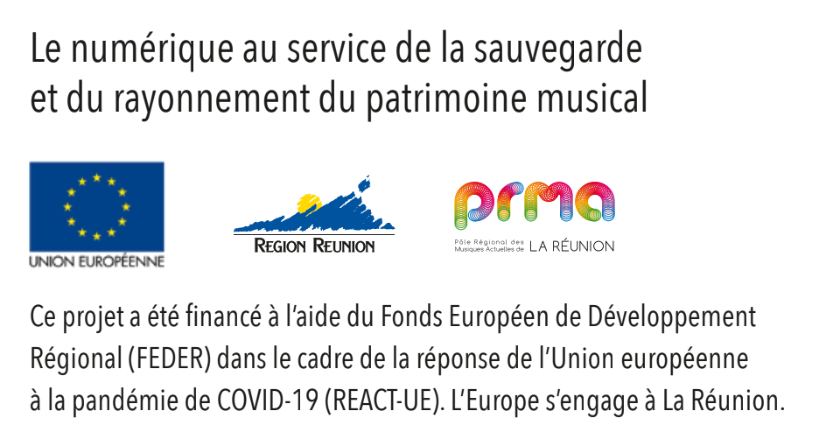The narslon (or tronpet malbar) is a small oboe with a conical bore played in Reunion by the descendants of Indian indentured labourers. It is always played with the morlon drum, with which it forms an ensemble that the musicians simply call morlon-narslon.
Musical instrument
Narslon - An Indian oboe in Reunion Island
publié par
William Tallotte
01 novembre 2023
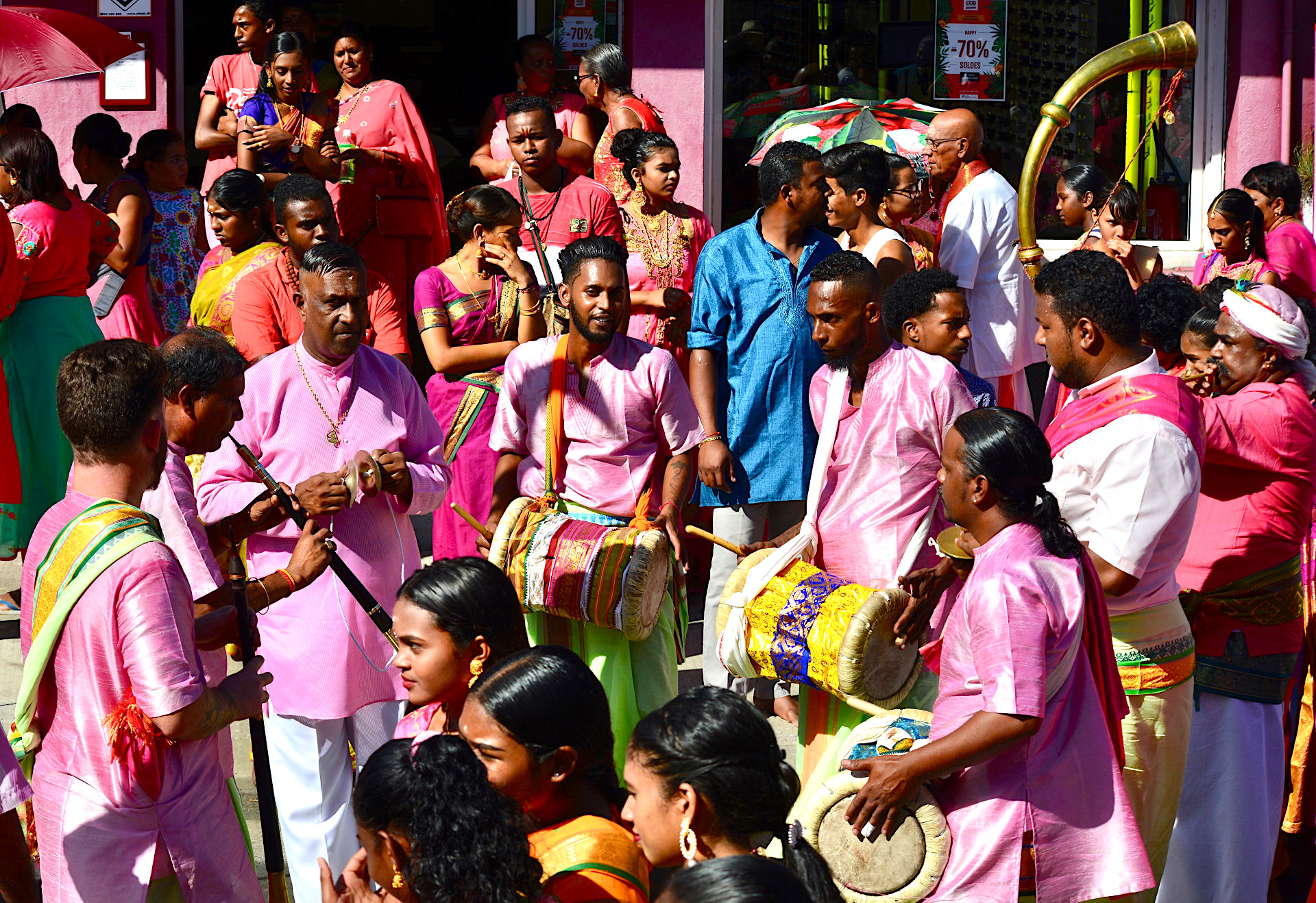
The narslon can be heard during Hindu ceremonies and festivals celebrated in the island’s “malbar” chapels (sapèl), and main Tamil temples (koylou). In addition it can be heard in a non-ritual context, during religious events with a predominantly recreational character, such as Dipāvālī, the great pan-Indian festival of lights. And it can also be heard – as if recalling the links that slavery and then indentured labour forged between Indian and Malagasy cultures – in some maloya recordings..
The journey from India to Reunion
Historical sources record that an oboe of Indian origin was played in Reunion in the second half of the 19th century. Iconography provides us with some examples, including an 1880 print from L’Album de l’île de la Réunion, in which a troupe of musicians is shown leading the procession of two Hindu deities seated on an elephant (Figure 2). Here the oboe is accompanied by a drum, trumpet, and cymbals, forming an ensemble still composed the same way today (Figure 1).
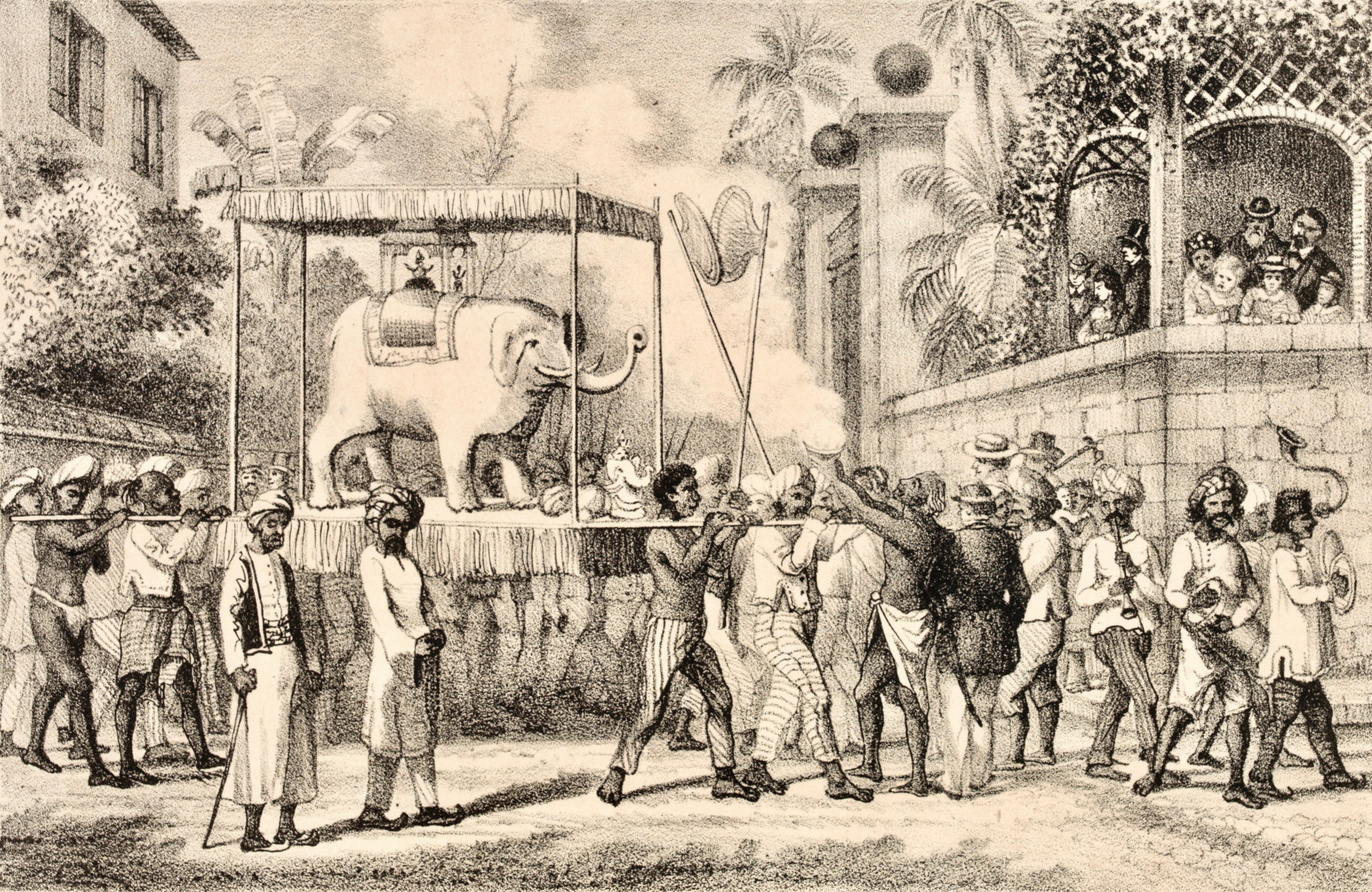
Written texts contain many examples, but it is important to know how to interpret them. Nineteenth-century authors mention aerophones of Indian origin, but often confuse the oboe (which has a double or quadruple reed) with the clarinet (which has a single reed) or the flute (which is bevelled). This is notably the case of Louis Maillard who, in his Notes sur l’île de la Réunion (Bourbon) (1862), described the songs of Indian indentured labourers disparagingly, concluding that:
"[…] one would gladly abandon the scene of their gathering upon hearing them sing, if one had not kept away from it in advance because of the inevitable accompaniment of drums, timpani in all tones, and bamboo flutes with three notes". (Maillard, Louis, Notes sur l'île de la Réunion (Bourbon), Paris, Denetu, 1862).
Given what we know (1) about the structure of Indian ensembles, and (2) about the Indian instruments present in Reunion at the time, these “flutes” were undoubtedly oboes. Among other arguments, it should be remembered that in the Indian world timpani – even more so than drums – are always played with oboes; and that flutes with two or three finger holes are not part of the South Indian repertoire of instruments.
In addition to iconographic and textual sources, instruments handed down through generations of local musicians give a more precise idea of the first Indian oboes to arrive on the island. The finest example is undoubtedly one of the instruments passed down through the Mounichy family (Figure 3). It must have travelled in about 1880 from its Tamil homeland to Reunion Island in the belongings of Émilien Mounichy's father (Figure 4).
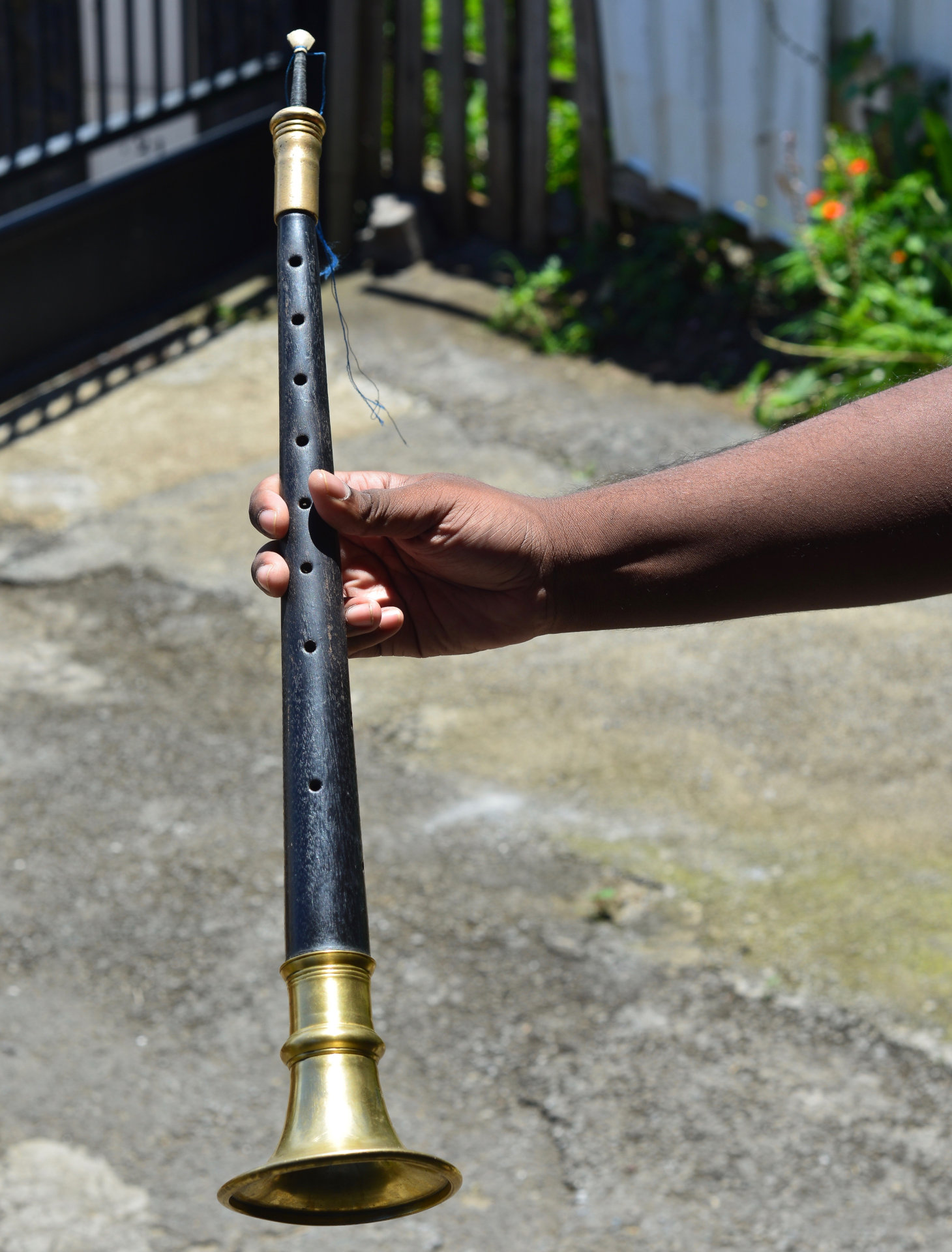
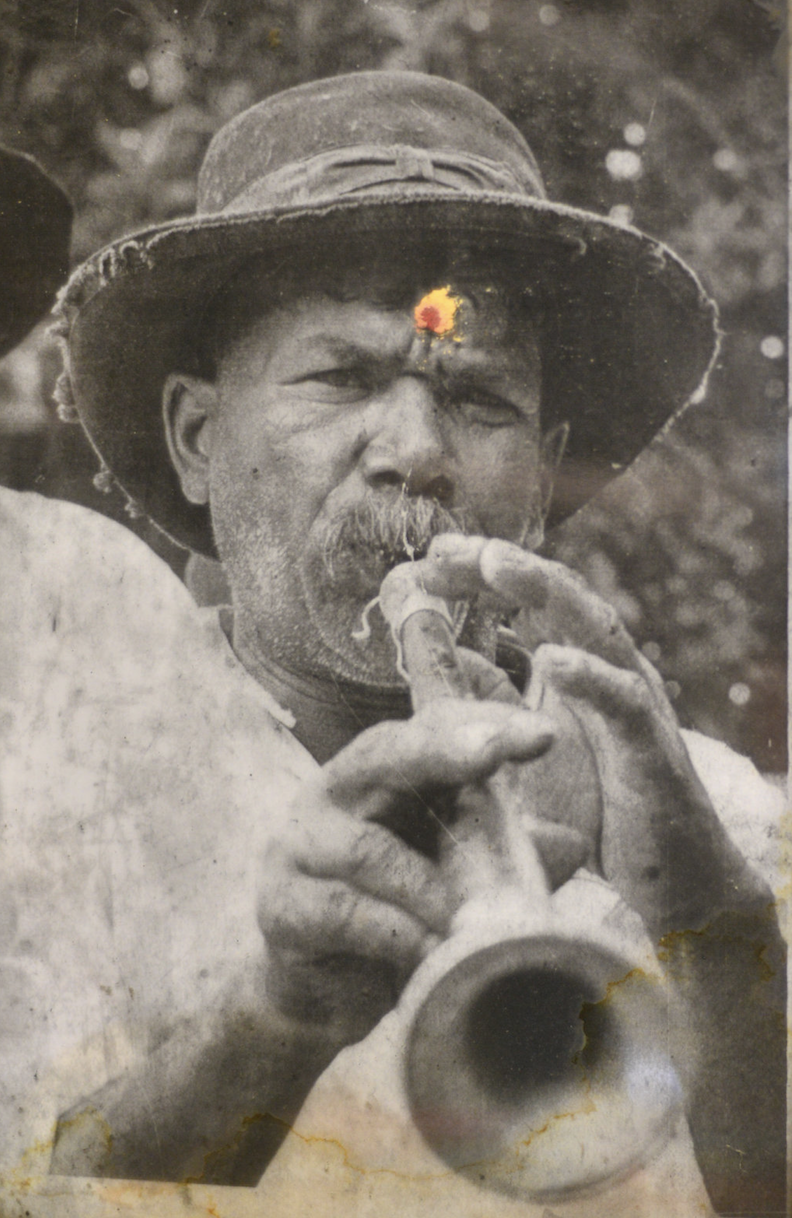
The narslon’s Indian ancestry
The oboe shown in Figure 3 is a nākacuram (from the Sanskrit nagasvara, which became nagasvaram in Tamil) – a term which became narslon in Réunion Creole. Like its modern variants, it was played in instrumental ensembles with distinct musical traditions. In other words, it could – with a suitable reed and playing technique – be incorporated into ensembles falling into both the classical category (such as periya mēḷam, the Brahmin temple ensembles) as well as the popular/folk music category (such as the naiyāṇṭi mēḷam or any other oboe and drum ensemble traditionally affiliated with a low-status temple). However, two interconnected elements mean we can make some assumptions about the narslon’s lineage: the reed and, by correlation, the music.
The reed used by narslon players – such as Émilien Mounichy, his contemporaries, and most musicians today – is a quadruple reed attached to the end of a metal tube (Figure 5). It is inserted into the mouth, past the incisors, and does not offer the player the option of modulating the sound through varying degrees of lip pressure.
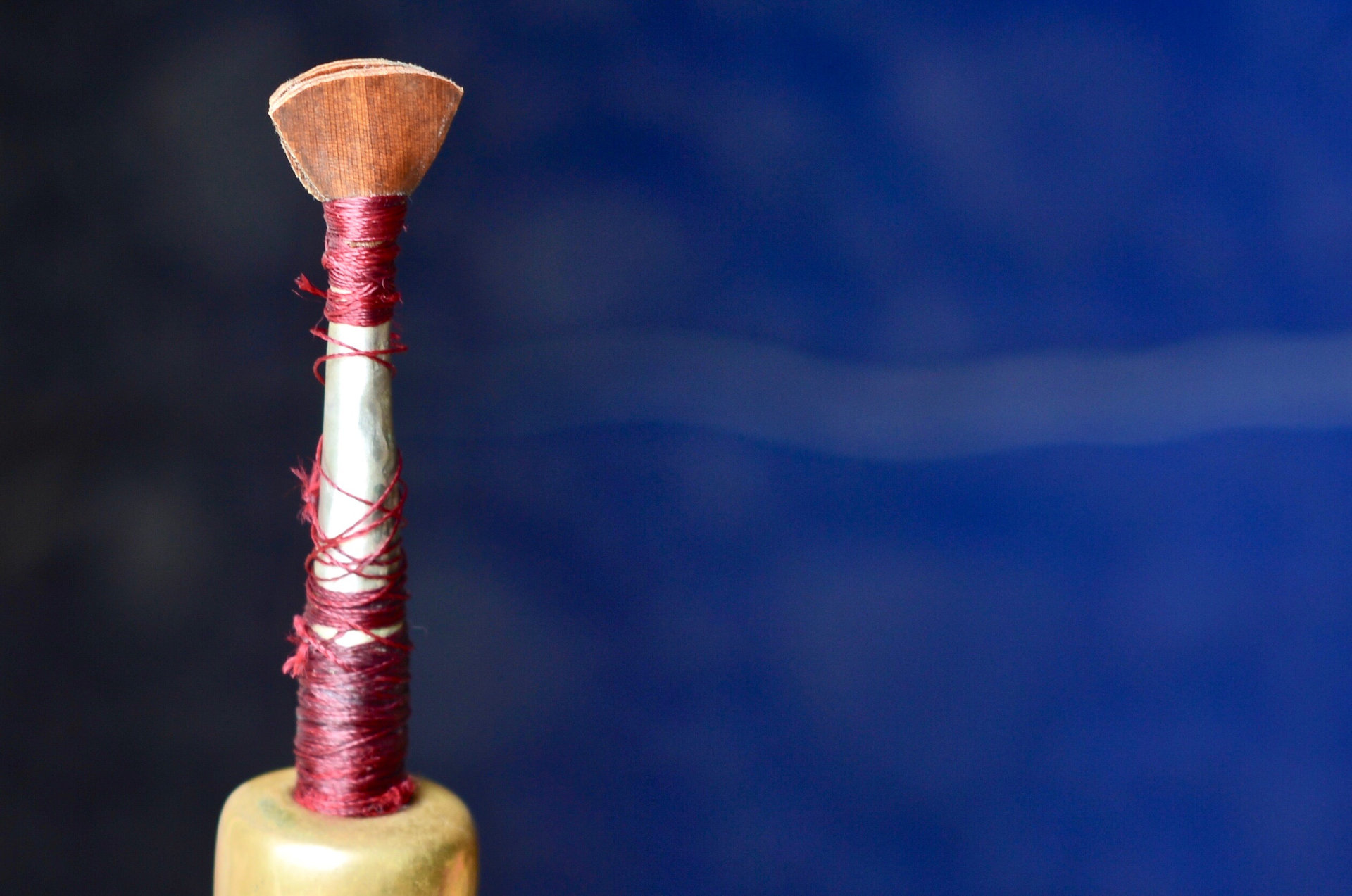
Reeds similar to those of the narslon are used in Tamil Nadu in the oboe traditions of communities at the lower end of the social scale - traditions whose music, like that of the narslon, is based on simple tunes composed of four or five notes. Although it might seem quite legitimate to link the narslon tradition to one of the traditions mentioned above (such as uṟumi mēḷam), there is no way to prove this is true due to a lack of historical data about these traditions in the areas where most indentured workers were recruited from: Madras, Pondicherry, Karikal, Mahé, Yanaon, etc. At the very least it can be suggested that in the Tamil region the narslon tradition probably does not have its source – other than marginally – in an oboe tradition which uses more imposing double reeds, thereby not only enabling the development of a lip-pinching technique, but also playing that is based more or less explicitly on the melodic framework known as raga: the nāgasvaram tradition, in its classical version (periya mēḷam) and popular version (naiyāṇṭi mēḷam); or that of mukha vīṇā (for example, in the context of terukkuttu street theatre).
Towards multiple styles and genres?
In spite of fairly uniform practices, over time narslon musicians have developed distinct styles. When comparing Figures 4 and 6 for example, note the different position of the right hand and the use, in the second case, of a “pirouette” – a disc-shaped lip rest that provides better hold for the reed in the mouth and the use of continuous breathing.
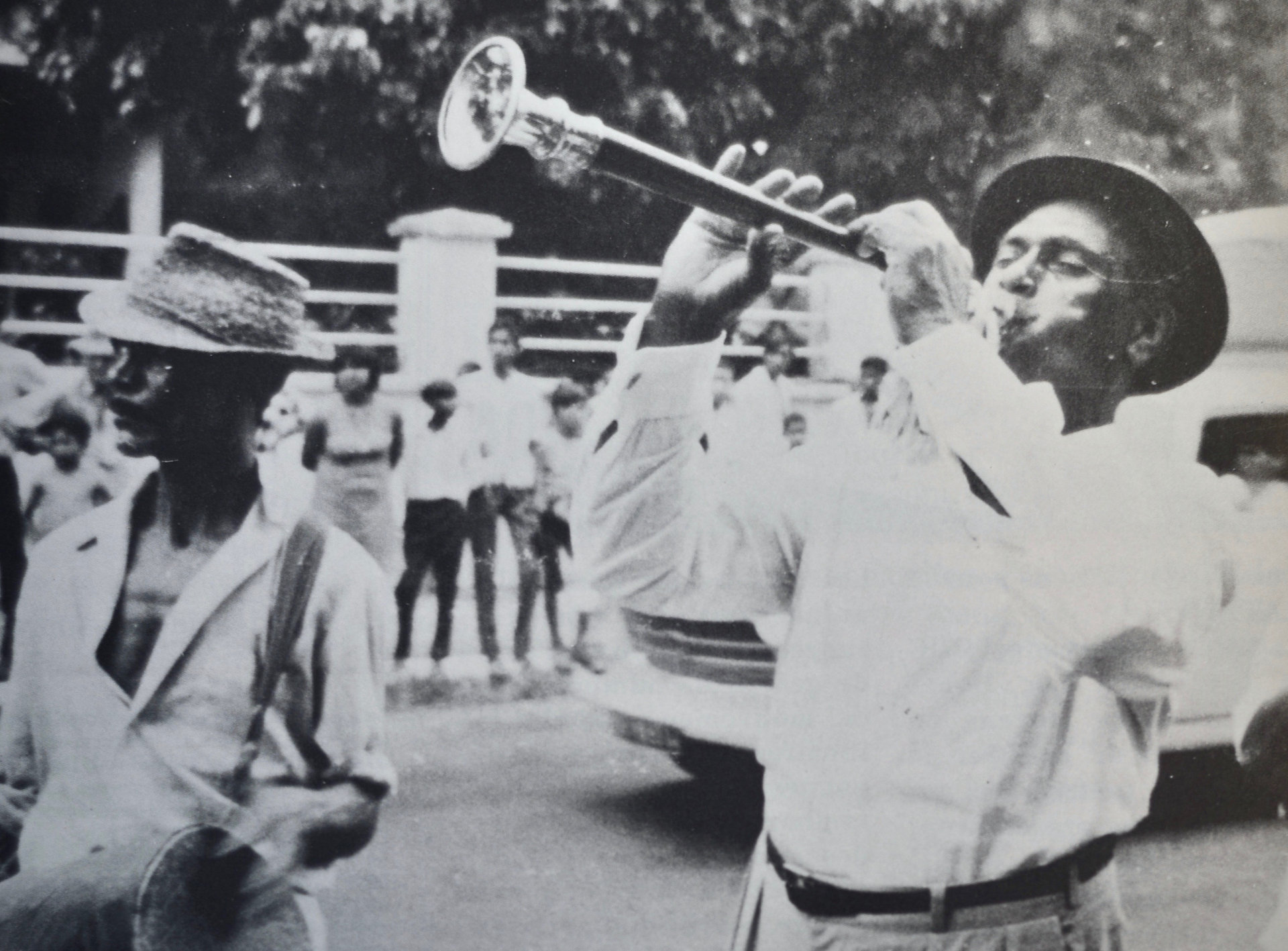
What is the current state of the narslon tradition? The identity-based movements that have advocated since the 1970s to replace popular Hinduism – which originated in the South Indian countryside – by a high-caste Hinduism, seem to have weakened it greatly. Starting in the 1980s, many temples were transformed and dedicated according to the Brahmin temple model. The community organisations that support this movement have brought in Tamil architects and priests, as well as nagasvaram players. Meanwhile, many Reunion Islanders of Indian origin have gone to India for religious or musical training. Narslon players find themselves competing on their home ground, caught between those who would like to preserve the religious and cultural heritage of their ancestors, and those who, on the contrary, would like to replace this heritage in order to forget about them.
However this great rift, that still exists today, has given rise to hybrid forms rather than schisms. This means that on the island we can now find traditional narslon players, nāgasvaram players from India or Reunion, and oboe players (a mix of narslon and nāgasvaram, or even other Indian oboes) who seesaw between both traditions.
William Tallotte
Traduction réalisée par Catharine Cellier-Smart (Smart Translate).
Picture 1: Morlon-narslon ensemble composed of two narslon oboists, three morlon drummers, two tarlon cymbalists, and a trumpeter. Siva Chanmouga Naada Temple, Saint-Louis, February 2020. Photo by William Tallotte.
Glossary
Dipāvālī (Sanskrit): pan-Indian festival of lights, celebrated in Reunion since the late 1980s
koylu (Reunion Creole < Tamil kōyil, "temple", "king's house"): Brahmin-influenced Indo-Reunionese temple, where food offerings to the deities are vegetarian only
mēḷam (Tamil): a drum; drum ensemble that may or may not include oboes
morlon (Creole < Tamil mēḷam): two-sided cylindrical drum played in Reunion
mukha vīṇā (Sanskrit): small Indian oboe
nāgasvaram (< Sanskrit nāgasvara): an oboe associated with South Indian "classical" music
naiyāṇṭi mēḷam (Tamil, liṭerally "teasing ensemble"): Tamil oboe and drum ensemble attached to low and middle status temples
nākacuram (Tamil < Sanskrit nāgasvara): see nāgasvaram
narslon (Reunion Creole < Tamil nākacuram): oboe of Indian origin played in Reunion
periya mēḷam (Tamil, “large ensemble”): South Indian oboe and drum ensemble attached to Brahmin temples
rāga (Sanskrit): melodic framework; concept
sapèl (Reunion Creole < French chapelle): in Reunion Island refers to plantation temples that carry out blood sacrifices
tarlon (Reunion Creole < Tamil tāḷam < Sanskrit tāla): cymbals of varying size played in Reunion
terukkūttu (Tamil): form of street theatre practised in Tamil-speaking regions
uṟumi mēḷam (Tamil): Tamil oboe and drum (or drum-only) ensemble attached to low-status temples
